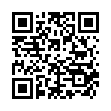|
Robotics, Automation and Control Systems
Increasing efficiency of over-the-horizont surface wave radars for detecting surface objects based on the antenna system aperture
A. Aleshkin, S. Balakirev, V. Nevzorov, P. Savochkin
Mozhaisky Military Space Academy
Abstract:
Nowadays, over-the-horizon surface wave radars are used to solve the problems
of monitoring the situation on the water surface adjacent to the border areas of the land. The
main advantage of these means is the ability to detect surface objects beyond the optical
horizon due to the propagation of an electromagnetic wave along the sea surface in the
diffraction zone. However, the accuracy characteristics of such observations turn out to be
extremely low due to the small signal-to-noise ratios of the reflected signal, which in turn are
caused by the wide directivity pattern of the existing antenna systems.
It leads to the prevalence of background reflection in the irradiated region over the radio
echo of the target object. For the same reason, stationary targets are undetectable, for which
there is no Doppler frequency shift in the reflected signal spectrum. The only way to increase
the signal-to-noise ratio is to narrow the radiation pattern in the direction of the detected
target (an increase in the antenna system directivity. The article proposes a solution for the
described problem by the method of sequential accumulation of reflected signals and their
summation according to the principle of optimization of the selection of phase relationships for
adjacent pulses (synthesized apertures) corresponding to the eventual front of electromagnetic
waves focused in the direction of the hypothetical target.
The solution of this problem will significantly narrow the antenna directional pattern,
which leads to the achievement of direction finding accuracy that meets the requirements for
some navigation systems. In this case, there is no need to change the design of the antenna
arrays. Computer simulation of the synthesized antenna array was performed and its directional
pattern was constructed. A quantitative assessment of the increasing the angular resolution was
performed in comparison with the potentially possible one determined by the Rayleigh
criterion. This circumstance allows us to consider the possibility of using coastal over-the-horizon surface wave radars to detect stationary objects «invisible» by existing radars.
Keywords:
surface wave radar, antenna array, directional pattern, amplitude-phase distribution, aperture synthesis.
Citation:
A. Aleshkin, S. Balakirev, V. Nevzorov, P. Savochkin, “Increasing efficiency of over-the-horizont surface wave radars for detecting surface objects based on the antenna system aperture”, Informatics and Automation, 20:1 (2021), 68–93
Linking options:
https://www.mathnet.ru/eng/trspy1142 https://www.mathnet.ru/eng/trspy/v20/i1/p68
|

| Statistics & downloads: |
| Abstract page: | 108 | | Full-text PDF : | 118 |
|




 Contact us:
Contact us: Terms of Use
Terms of Use
 Registration to the website
Registration to the website Logotypes
Logotypes








 Citation in format
Citation in format 